MAVERICK MAPPER
A linguistic and visual tour of the Koup Karoo
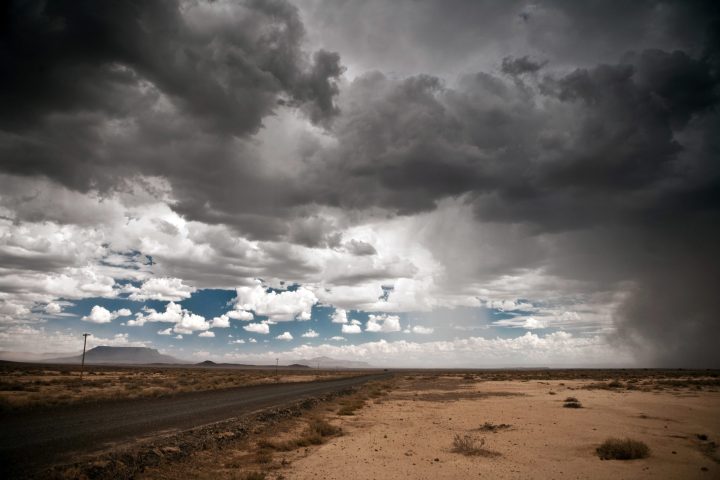
It was the weirdest of road trips, through one of the most far-flung and forlorn and strikingly strange parts of the country – the Koup Karoo.
This is where nothing is quite as it seems. The world is deconstructed and dismantled.
The French philosopher Jacques Derrida developed the theory of “deconstruction” which encouraged the reader/viewer to apply a fragmented lens to various disciplines. It became the dominant approach to literary criticism in the 70s and 80s, aiming to show that any text inevitably undermines its own claim to have a determinate meaning. In other words, the known world fragments; words teeter on the edge.
My trip coincided with the recent protests in the country. The sights and experiences I had in some ways reflect the current dichotomous narrative of some of South Africa’s deepest thinkers writing in Daily Maverick. As someone with an interest in words, many of these articles resonated with me as authors grapple with terminology and literary devices to try to describe the political and social dynamics of the country. Literally, can we find the words?
Mark Heywood writes about how prose with its grammatical strictures seems ill at ease right now, compared to the “adulteries of art, malformed words, broken rhymes”, of poetry.
Imraan Coovadia dwells on “Lootings and lexicons: A new dictionary for South Africa”.
Stephen Grootes looks at the terminology chasm in the contradictory messaging from cabinet between “insurrection” versus “this was not a coup” but (mere) “counter-revolutionary looting”.
Rebecca Davis says “this is things well and truly falling the fuck apart”, while wrestling with how and whether to celebrate Mandela Day amid the wreckage.
Dale T McKinley writes a piece, “Unrest: Of understanding, representation and explanation”, which has no fewer than 17 terms coupled by a slash (“could/can”; “structural/systemic”; “are/would be”) and 13 sets of parentheses. This writing style has the effect of evoking uncertainty. (Am I right/wrong?)
Wandile Mthiyane and Kristin Brig-Ortiz in “Steps to take for the reincarnation of South Africa” write “The riots are a warning shot demanding us to dismantle and reconstruct South Africa to make it a more equitable country for everyone.” [My underlining].
Back to my road trip through the Koup Karoo. First the deconstruction.
On the long, dry and remote roads between Merweville, Fraserburg and Sutherland, Cape Town’s Table Mountain (1,086 metres high) morphs into Tafelberg (1,588 metres high), replete with Devils Peak, yet with Lion’s Head lopped off. This is the Koup’s very own Table Mountain.
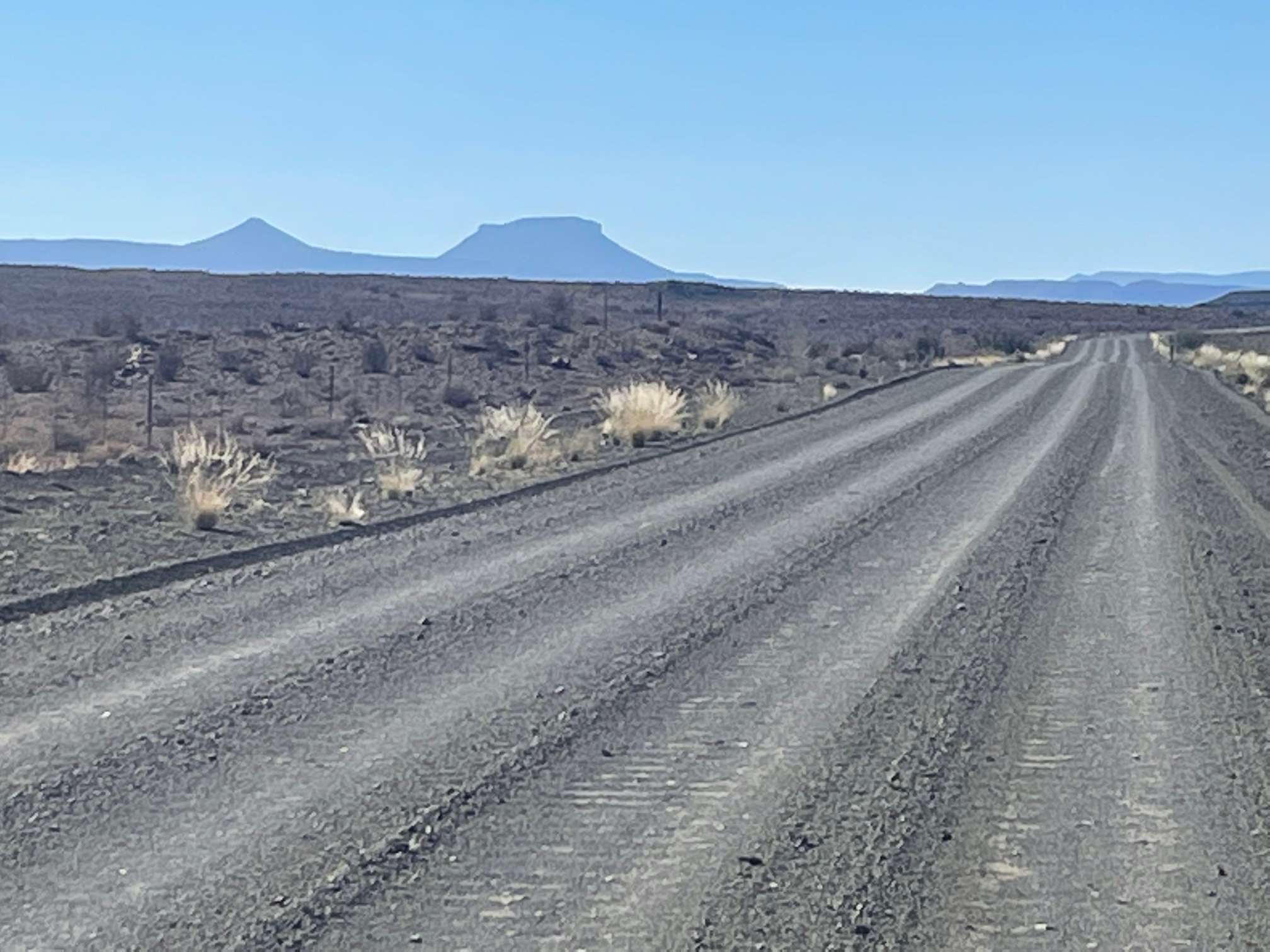
Purple Tafelberg, tawny sparse grass, and grey gravel road. Image: Lucy Reyburn
Debbi Morkel, a talented artist tucked away in Fraserburg, painted a large work for me of the chimeral Tafelberg in her unique realistic style, not too far removed from John Meyer, Walter Meyer and John Kramer. She captures the vast vaulted sky, which moves with the traveller from gray to pearl to blue to gray. And the endless terrain of smudgy green and tan, with mountains turning purple in the distance.
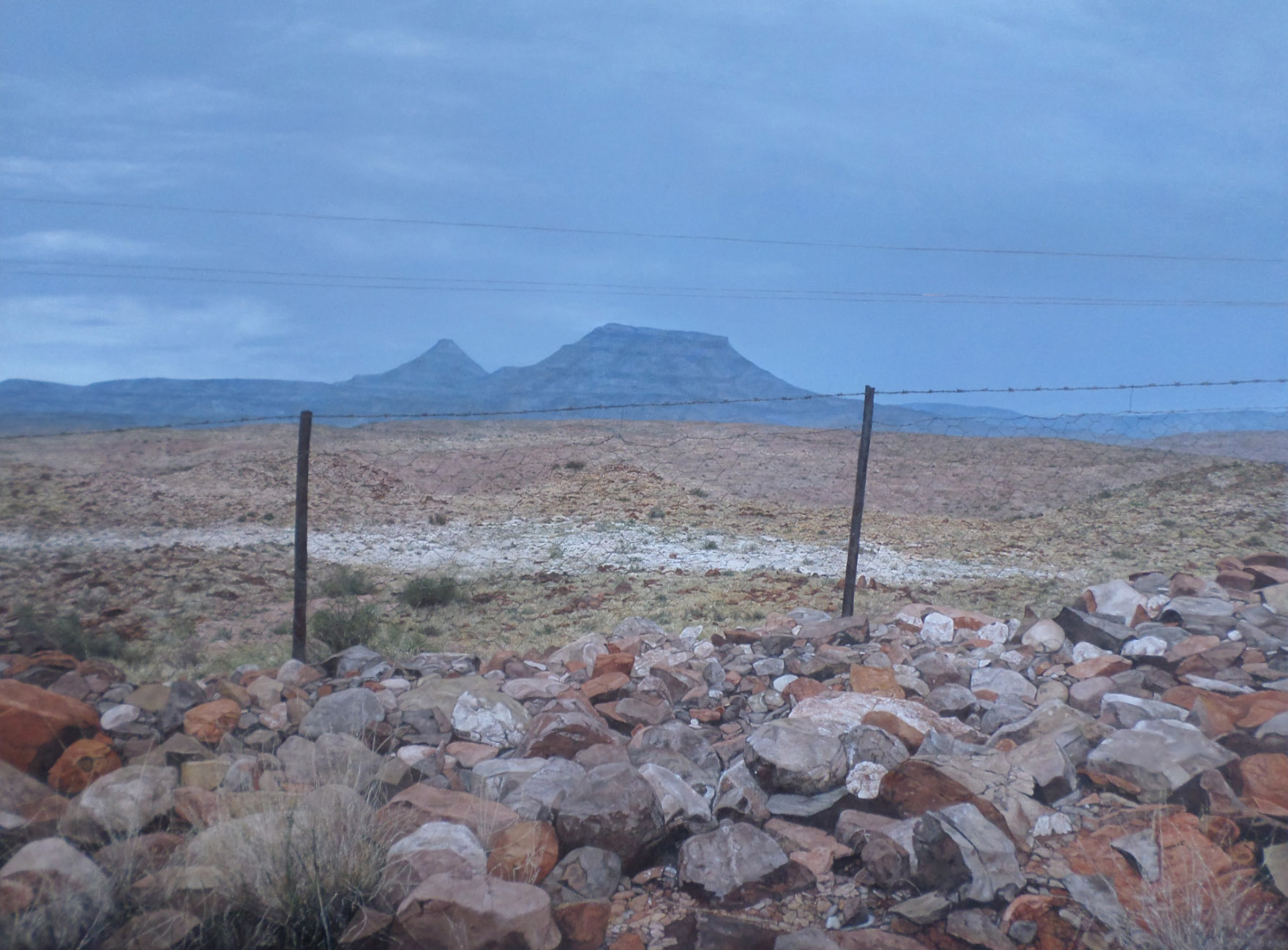
Tafelberg. Painting by Debbi Morkel.
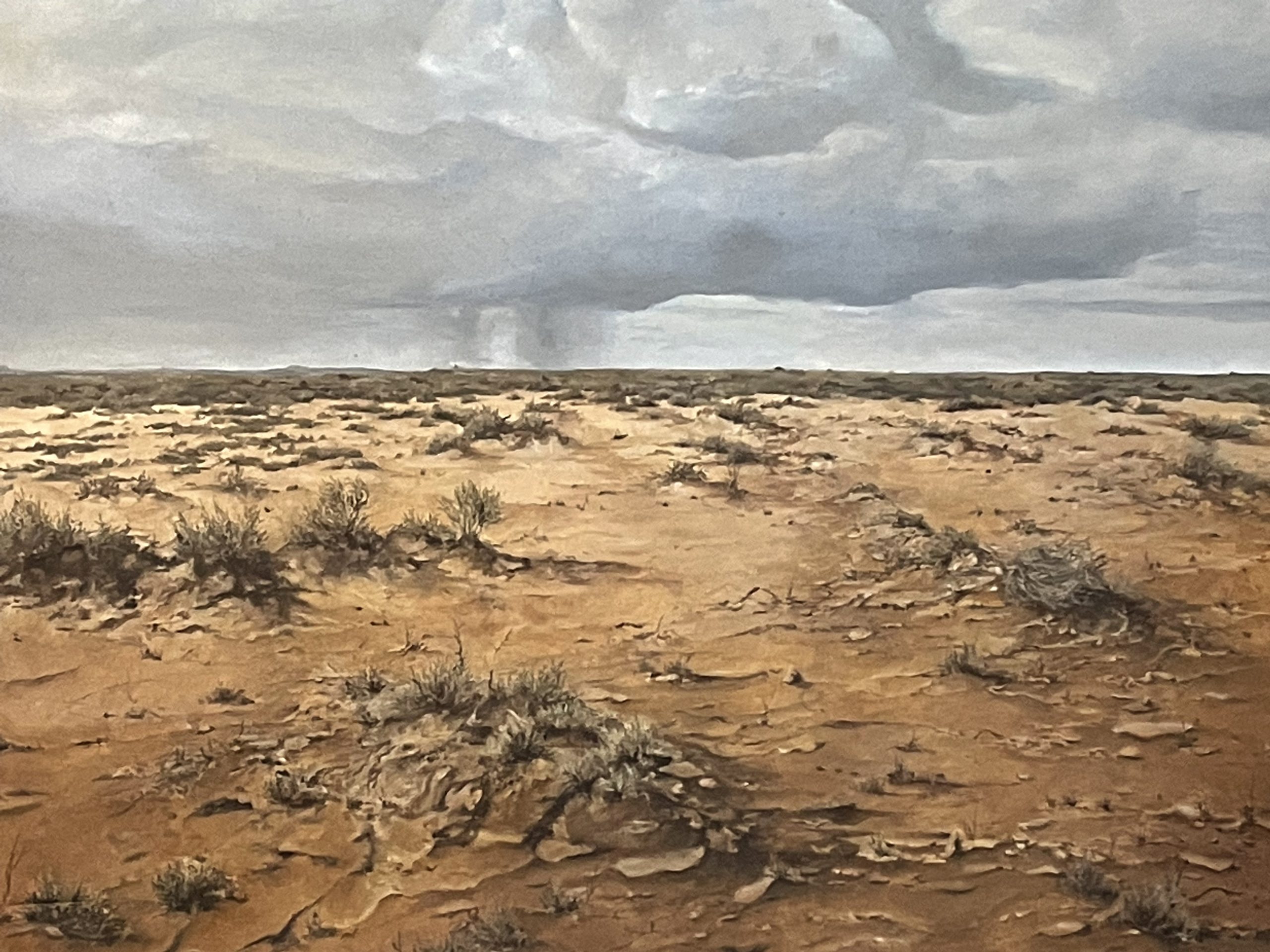
Storm clouds in the Koup Karoo. Painting by Debbi Morkel.
Fraserburg, Sutherland and Williston make up the ANC-led Hoogland administrative area in the Namakwa District of the Northern Cape. Its sparse population of 12,000 is dispersed over 32,000 square kilometres – that is fewer than three people per square kilometre. The Karoo National Park lies 140 km south-east of Fraserburg, its buttresses forming part of the Nuweveld mountain range.
Between Fraserburg and Sutherland I pass a lone cart of Karretjie Mense, an anachronistic sight if ever there was one. These impoverished and nomadic people live on their carts and work hand to mouth shearing sheep and fixing fences. There is a strong echo in their faces of San ancestry, the first people of this area.
Merweville, a tiny hamlet in the worst drought-stricken area of the Koup, is unexpectedly deconstructed through a clean coat of paint and broom-swept streets – all on account of being the filming site for a popular Afrikaans soapie, Die Boekklub.
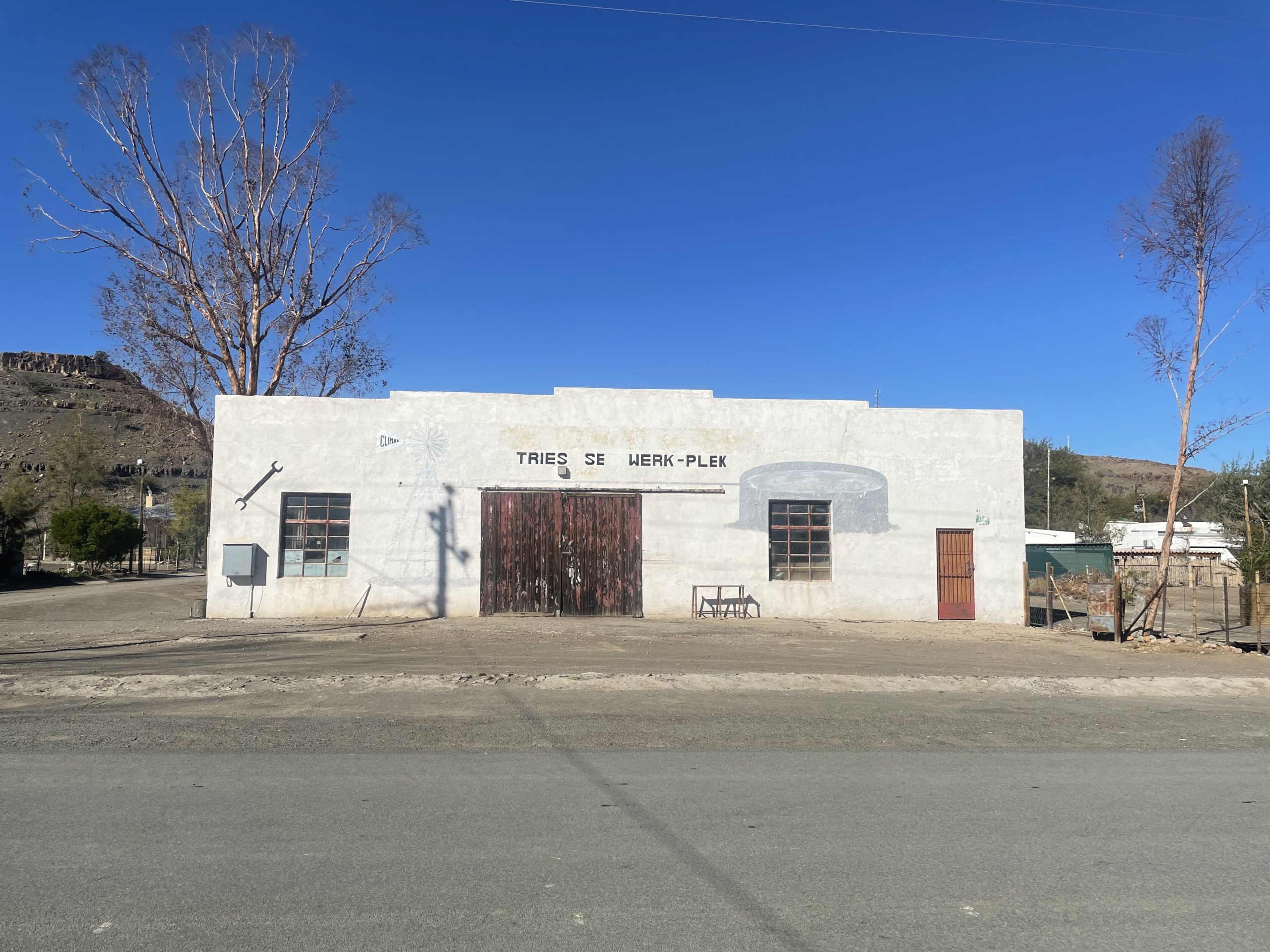
Merweville spick and span. Image: Lucy Reyburn
JM Coetzee’s family had a farm near Merweville called Voëlfontein. Doubtless a love of and early immersion in this landscape lent itself to his sparse, skeletal-like prose. In “Boyhood”, the first of his autobiographic fictional trilogy, he writes: “He knows Voëlfontein best in summer, when it lies flattened under an even, blinding light that pours down from the sky.”
Fraserburg and Sutherland were settled (/settlered?) in 1861 and 1855 respectively, as church and market towns to serve outlying areas. In a dismantled fashion, both churches were founded by Scottish ministers who were sent to Holland for three months to learn Dutch before being dispatched to the Cape Colony to bolster the ranks of the Dutch Reformed Church.
Fraserburg, named after Scottish immigrant The Reverend Colin Fraser, is described on the Hoogland municipality’s website as one of the most authentic and best-preserved Karoo towns left in South Africa. The area benefitted from the late 1800s wool boom, during which the world couldn’t get enough wool. Prosperity led to the building of some fine examples of Victorian houses in Fraserburg.
However, with a pitifully poor “township” and many lacklustre houses, it would appear that Fraserburg has seen better days. Maybe it needs its very own TV soapie. At a good five hours’ drive from Cape Town and a straight-roaded 110 km off the N1 culminating in a glorious pass up to a plateau, it certainly is remote. It had a manually operated party-line telephone exchange up until January 2014. Like its neighbouring town, Sutherland, a mere 100 km away, the night sky is thronged with stars and like its other neighbour, Williston, also 100 km away, it has a few corbelled houses.
One of the better preserved and more handsome buildings in Fraserburg is the Ou Pastorie which now houses the town’s museum. The whitewashed, thick-walled structure was built in 1861 in the Cape Dutch style overseen by The Reverend Carl Arnoldus Bamberger, first minister of the town’s church. In a deconstructivist twist, the town’s registered tour guide and volunteer museum curator Marthinus Kruger tells me that this Cape Dutch building is the only one of its kind in South Africa to have curving inner walls – four of them. The effect is discombobulating – was I at the Bilbao Guggenheim? It is speculated The Reverend had a love of the baroque and had therefore felt compelled to introduce a curvaceous element.
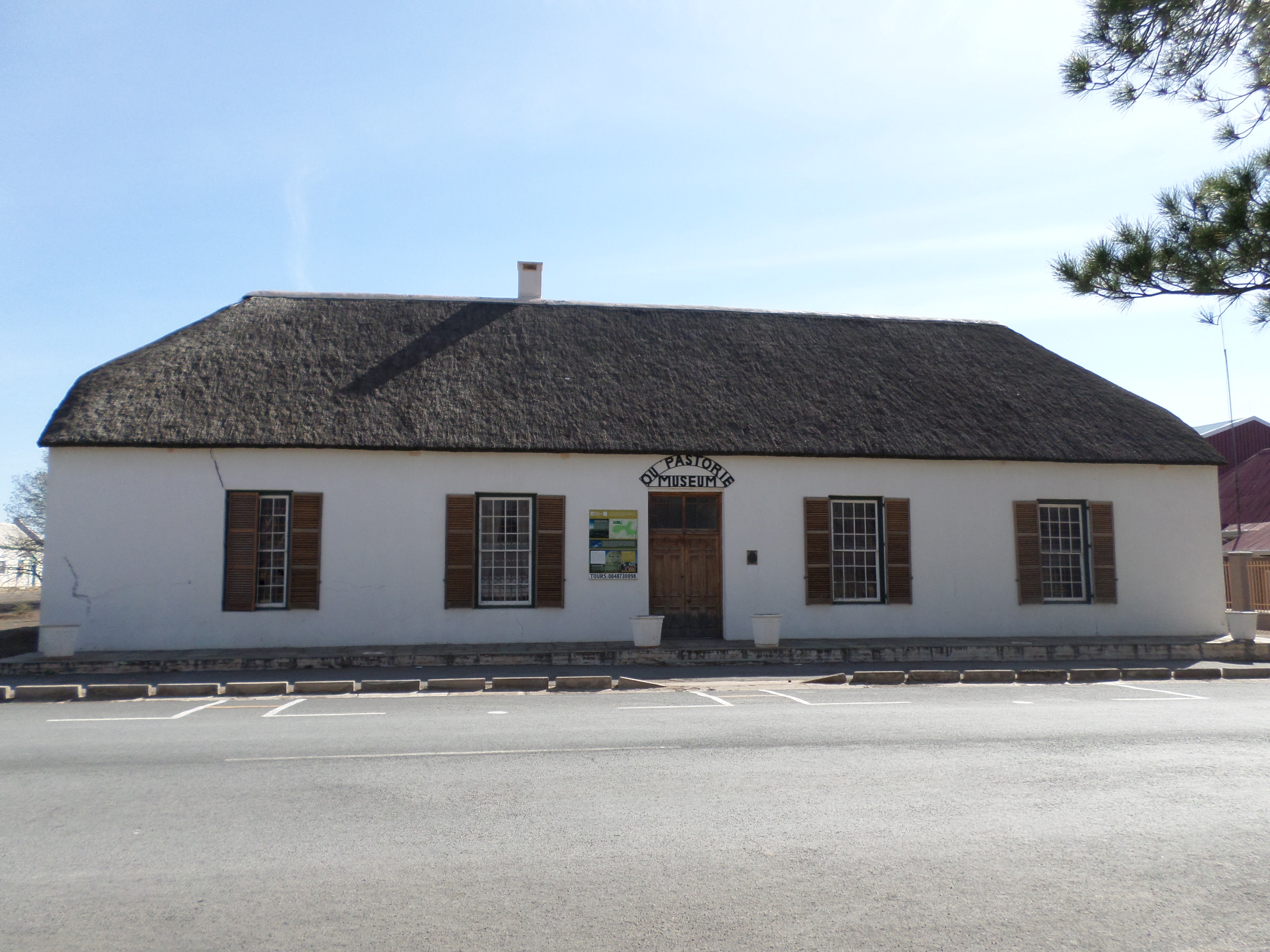
Die ou pastorie (old parsonage), housing the Fraserburg museum. Image: Daniel Johnson-Barker
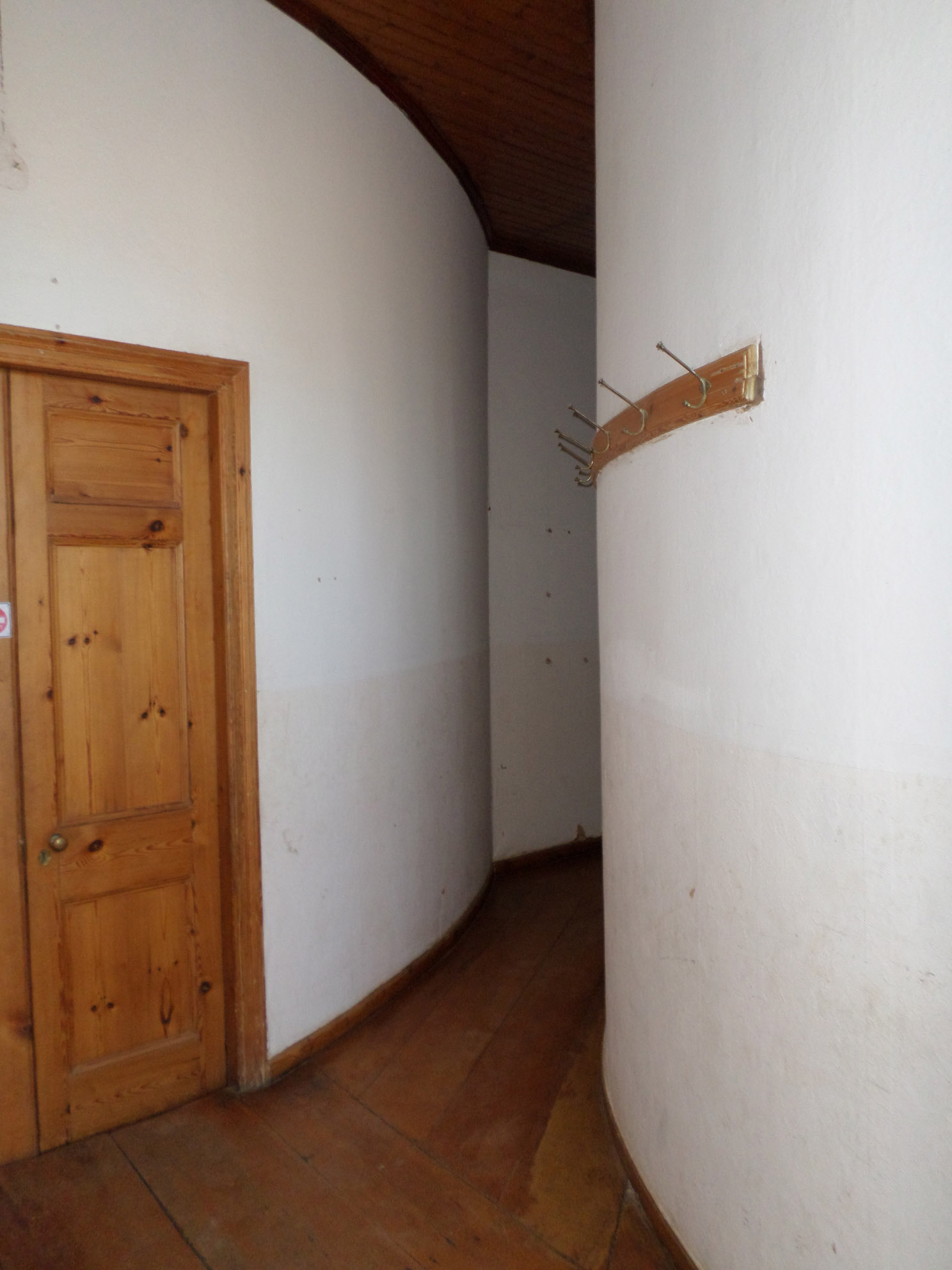
The anomalous curved walls in the Cape Dutch-styled museum in Fraserburg, with yellowwood planks from Knysna. Image: Daniel Johnson-Barker
This sense of the baroque influenced another structure he designed and had built by a Baster, Adam Jacobs, also in 1861. This is a strange, hexagonal “peperbus” or pepper pot, which has something of the Victorian folly about it, an eccentric structure serving a mainly ornamental purpose.
Indeed, according to Patricia Kramer, a prominent member of the Vernacular Architecture Society of South Africa and author of the newly released book “Hidden Karoo”, the structure has served either no purpose or occasionally strange purposes over the years. The original idea had been for a bell to summon people to the market, but this was a failure and it ended up serving as a magistrate’s court, library, storeroom and school board offices. She says a possible theory for a hexagonal building was that Bamberger had seen a peperbus in Holland or Belgium where they were used by the Dutch East India Company to store cargoes of spices. My guide Marthinus gave me another snippet of plausible information, that the peperbus bell had been used to signal a 9pm curfew for the coloured folk of the town. South Africa.
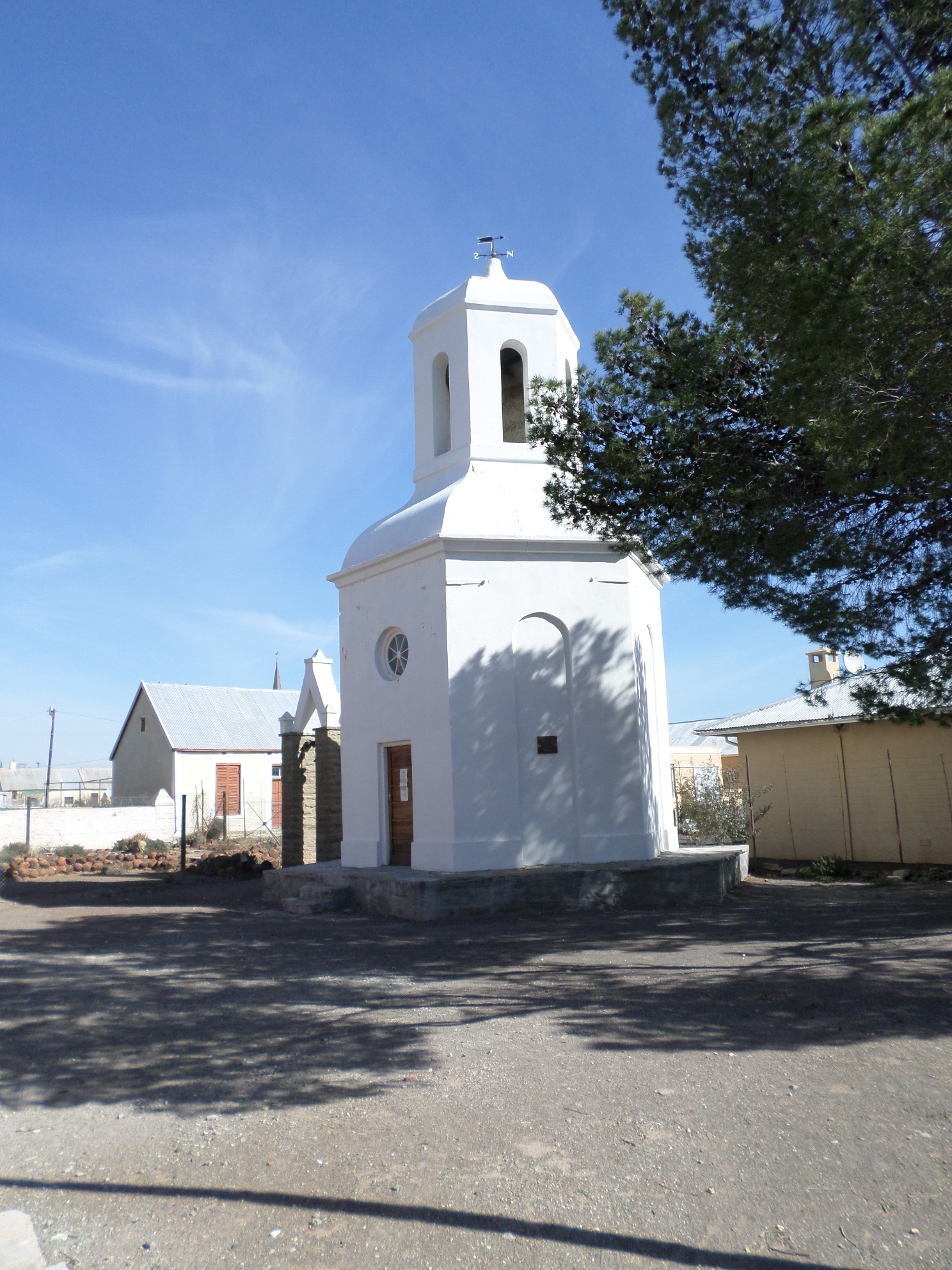
The peperbus. Image: Daniel Johnson-Barker
Not least, Fraserburg is famous as one of the best paleontological sites in South Africa, with some extraordinarily well-preserved fossilised dinosaur footprints dating back 250 million years on the Rietfontein farm on which the town was founded. The Ou Pastorie museum has a room dedicated to fossils and Marthinus conducts guided tours to the farm. I was not really fazed when artist Debbi Morkel’s partner produced a large fist-sized fossilised dinosaur foot, which had inadvertently doubled up as one of the building bricks of a wall in town that had tumbled down. This is surely taking the dismantling of function and meaning to the extreme.
What to make of it all? But remember this is South Africa, where anything goes and everything is dismantled.
Is reconstruction possible?
Like many bewildered South Africans, I am still battling to adopt a “constructivist” let’s-build-and-repair mindset. I need to digest the shock of the looting and the plight of the desperate. Nonetheless, repaired the country will and must be, and I started to see symbolic flickerings of this in the Koup Karoo.
The humanitarian organisation, Gift of the Givers, has been in the drought-stricken area over the past few years, bringing fodder to livestock to keep animals alive and farmers going. They are, of course, active right now in the loot- and arson-damaged parts of South Africa.
In Sutherland, the world-famous Southern African Large Telescope continues to scan the night skies and more recently, in 2018, the MeerKAT was launched in Sutherland as a precursor to the revolutionary Square Kilometre Array.
Using the vast vistas to best advantage, the largest renewable energy hybrid plant yet to be built in South Africa (43 wind turbines!) is under way on the turn-off from the N1 at Matjiesfontein towards Sutherland. This will combine wind, solar and battery storage to produce an annual 128 MW of energy, said the multinational team of engineers I chatted to over dinner in the Lord Milner Hotel in Matjiesfontein, their home from home for a few months.
The threat of fracking in the area seems to have died down. Experts have advised that there is simply no oil and greedy exploration has been cut dead in its tracks for now.
And, as I left the Koup, clean clouds crammed the horizon. Could this be rain? DM/ ML
Debbi Morkel is represented in Johannesburg through Chérie De Villiers Fine Art gallery; registered tour guide – museum and fossil tours, Marthinus Kruger on 061 058 5594; Die Tuishuis, Fraserburg – comfortable B&B or self-catering accommodation; more information about Merweville here.
“Koup” comes from the Khoi term for caul, so named because the golden veld grasses interspersed with dark grey ground in the area resemble the lacy fat and blood vessels around a sheep’s liver (my addition – the mind boggles).

















 Become an Insider
Become an Insider
Loved this article – need to make that road trip sometime!
A breath of fresh karoo air. Thank you.
Reminds me of an odd trip I made through the area in the late 1990s. I was driving the vanguard vehicle to an abnormal load horse and trailer. We were transporting a 55 foot yacht from Cape Town to Richards Bay via the N7 and then Nieuwoudtville, Calvinia, Williston, Canarvon, Loxton, Victoria West and on to Durban and points north! ( yes, you may well ask). A crazy driver in the huge rig, breaking the speed limits and me in a bakkie out front trying not to get run down. Anyway, the point is, I was thinking I would like to come back here and have a more leisurely trip through the area. This article has just reminded me that it still needs to be done!
Sounds like a pretty surreal trip.
There is in fact an inaccuracy in the article. Derrida’s philosophy is ‘deconstruction’ in particular as it relates to semiotics analysis.‘Deconstructivism’ is specific to architecture and is an amalgam of constructivism and deconstruction.
In the mid 1970’s, I was based in Merweville for a couple of years as part of a geological exploration team looking for uranium. Of course, we were spending many hours in the veld and the stoep of our house in Merweville was covered in fossilized remains of reptiles, not dinosaurs and the best specimens were donated to the Cape Town Museum. It also used to rain in those days and I have great memories of being trapped by streams in flood. Also, in those years, some areas had magnificent wild flower displays after the rain. Thankfully, Matjiesfontein which we used to use as our local pub is little changed over the decades.
Thank you, Lucy.
Great article. Love that area. If you haven’t before, take the road from Sutherland to Merweville, a route as austere as it is beautiful. Give yourself enough time, because somehow it takes twice as long as you’d think. It’s little more than a plaaspad, with sheep-grids and numerous gates.
Enjoyed the article